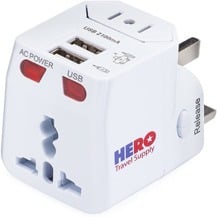Fall – September, October, November
If you’re considering a race in the fall, particularly in the northern United States, you’ll be facing some colder temperatures than a midsummer option. Dressing for the race presents different challenges, but ones that are easily overcome with advanced planning. You may be colder after your swim segment, so a wetsuit may be a good option. For biking, when the wind resistance will cool you even further, wear arm and/or leg warmers and cycling gloves. Consider a cycling jacket or vest to keep your core temperature up.
Winter – December, January, February
You’ll likely not be competing in a triathlon unless you live or travel to someplace warm to race. And even so, it still may be chilly so be prepared with cozy, warm clothing to change into right after the run portion. Think comfortable joggers or sweats, a mid-layer, and a hoodie or puffy jacket. Cover your head when biking with a wicking helmet liner. And all the way down to your toes, wear toe or foot covers and/or bring along foot warmer packets to slide into your shoes.
Spring – March, April, May
Spring can be one of the nicest times to race. Usually, the weather isn’t too extreme and you won’t need special gear or clothing. Always prioritize moisture-wicking fabrics, and clothes that fit well, and don’t forget a hat to keep the sun out of your face. A cooling towel and quick dry towel will also come in handy to keep you cool and dry.
Summer – June, July, August
You may be racing in the height of summer and need ways to beat the heat on competition day. There are several things you can do pre-race and in your choice of clothing that can help. Pre-cool your body by using a cooling towel, drinking icy drinks, standing in front of a fan, or even soaking in cold water. Wear cooling sleeves for the bike and run and wear light-colored clothing or consider a triathlon shirt made with SPF fabric.



















































